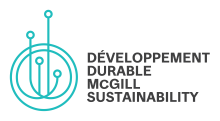∆ĽĻŻ“ý‘ļ aims to achieve carbon neutrality by 2040, meaning net-zero greenhouse gas (GHG) emissions, by:
- Reducing GHG emissions wherever feasible, such as through largescale energy transformations,Őż
- Sequestering carbon via carbon sinks, through its forested lands, andŐżŐż
- Purchasing carbon offsets to compensate for unavoidable or difficult-to-reduce emissions, such as those from air travel and commuting.ŐżŐż
The University’s target of achieving carbon neutrality by 2040 is aligned with the Intergovernmental Panel on Climate Change (IPCC) decarbonization timeline. Due to the urgency of climate change, strong commitments and actions need to be implemented and prioritized in order to significantly reduce our carbon footprint.
Learn more about the University‚Äôs path to carbon neutrality in the Roadmap for ∆ĽĻŻ“ý‘ļ's Energy TransitionŐż
Learn more about greenhouse gas inventories, or carbon footprint assessments, with the Office of Sustainability‚Äôs Greenhouse Gas Inventories 101Őż
Progress towards Carbon Neutrality
Őż Őż Őż Őż Őż Őż Őż Őż Őż Őż Őż Őż Őż Őż Őż Őż Őż Őż Őż Őż
Őż
∆ĽĻŻ“ý‘ļ 2022 Greenhouse Gas Emissions Sources
Miscellaneous includes emissions from: livestock & fertilizers, refrigerants & insulating gas, vehicle fleet, and other sources. Scope 1 refers to direct emissions. Scope 2 refers to emissions from purchased energy. Scope 3 refers to indirect emissions such as business-related travel and commuting.
Get involved in Becoming Carbon Neutral
- Vehicle managers can apply for a subsidy on the purchase of electric and hybrid vehicles until 2028.Őż
- Make the most of a discount on annual BIXI memberships available to all ∆ĽĻŻ“ý‘ļ community members.Őż
- Make sustainable travel choices with the Sustainable Travel Guide.Őż
- Purchase carbon offsets whenever air travel is necessary.Őż
- Take advantage of the Macdonald Campus self-serve bikes.Őż
- Charge your electric vehicle on campus.Őż
Frequently Asked Questions
What is a greenhouse gas inventory?
A greenhouse gas (GHG) inventory, also known as a carbon footprint assessment, is a quantified list of an organization‚Äôs greenhouse gas emissions and emission sources. It is a strategic tool for understanding, managing, and communicating emissions resulting from an organization‚Äôs activities. Learn more about greenhouse gas inventories, or carbon footprint assessments, with the Office of Sustainability‚Äôs Greenhouse Gas Inventory 101.Őż
What does ∆ĽĻŻ“ý‘ļ include in its carbon neutrality target?
∆ĽĻŻ“ý‘ļ includes Scope 1, Scope 2, and select Scope 3 emissions in its carbon neutrality target. Scope 1 includes direct emissions from energy consumption in buildings owned or controlled by ∆ĽĻŻ“ý‘ļ, the ∆ĽĻŻ“ý‘ļ vehicle fleet, the Macdonald Farm, and leaked refrigerants and insulating gases. Scope 2 includes indirect emissions from purchased grid electricity and purchased steam and hot and chilled water.ŐżŐż
Scope 3 includes other indirect emissions upstream and downstream of ∆ĽĻŻ“ý‘ļ‚Äôs activities, including emissions from University-financed air travel and student and staff commuting, energy consumption of select buildings over which we do not have operational control, sports team travel, the intercampus shuttle, water supply and treatment, and power transmission and distribution losses. By including select Scope 3 emissions in its long-term target, ∆ĽĻŻ“ý‘ļ is taking an ambitious approach to carbon neutrality that demonstrates leadership and accountability.
Who does ∆ĽĻŻ“ý‘ļ report its emissions to?
In addition to the ∆ĽĻŻ“ý‘ļ Board of Governors, ∆ĽĻŻ“ý‘ļ reports its emissions to: Environment and Climate Change Canada's and ; the ; the City of Montreal's Inventaire des sources fixes d‚Äô√©missions atmosph√©riques; the Minist√®re de l‚ÄôEnseignement sup√©rieur du Qu√©bec's ; and the Association for the Advancement of Sustainability in Higher Education‚Äôs

